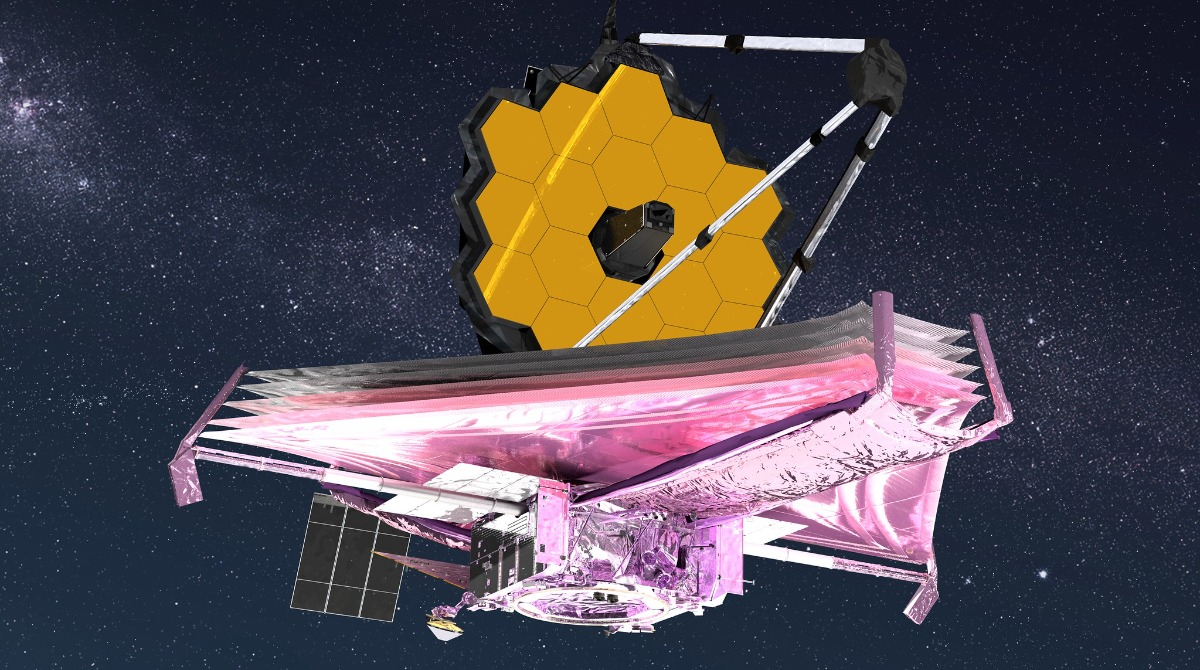

Utah Valley University science professor Joshua Lothringer, who was part of an international planetary exploration team, helped discover the presence of carbon dioxide (CO2) on an exoplanet 700 lightyears from Earth using NASA’s James Webb Space Telescope (JWST).
Lothringer and other scientists focused the telescope on a distant star and measured its light over time, watching it dim. If a star periodically dims, it can mean there is an exoplanet orbiting the star, casting a shadow as it orbits between the star and the telescope. This particular exoplanet was named Hot Jupiter WASP-39b.
The natural human eye cannot see an exoplanet through a telescope alone because the star’s light is too bright. However, scientists can detect them by tracking the changes in the light spectrum coming from the exoplanet using infrared cameras.
Lothringer’s assignment was to determine if carbon dioxide was present on the planet.
Gases on an exoplanet absorb light in different combinations of colors, allowing researchers to determine the composition of the atmosphere. CO2 absorbs a red infrared light that the natural eye cannot see.
In lay terms, scientists record the infrared light using infrared cameras, based on the same principles as night vision goggles. Hot objects, including human bodies, give off heat in the form of infrared light. The goggles use thermal imaging to capture the infrared light, making it possible to see what is happening in the dark. The same can be done with an exoplanet and its star using a telescope and an infrared camera.
Lothringer used complex computer programs and algorithms to document the light spectrum. “It took months to assemble and sort the data,” said Lothringer, referring to finding CO2. “It is a painstaking process because the wavelengths of the light are measured between 3 and 5.5 microns, and the data has to be exact. However, when all was said and done, it was thrilling to know that we have this ability and that we are contributing to a science that will hopefully someday lead us to habitable planets.”
Hot Jupiter WASP-39b is made up of hot gas, and its temperature is approximately 1,600 degrees Fahrenheit or 900 degrees Celsius. Lothringer’s CO2 research has been published on NASA’s Early Release Science program website: “NASA’s Webb Detects Carbon Dioxide in Exoplanet Atmosphere,” and in Nature: “Identification of carbon dioxide in an exoplanet atmosphere,” a weekly international journal that publishes peer-reviewed research in all fields of science and technology.
The WASP acronym stands for “Wide Angle Search for Planets,” which represents a group of international academic organizations that search for planets using an array of telescopes, the James Webb Space Telescope being one of them. Scientists use numbers and letters with the WASP descriptions to keep track of the exoplanets.
The Hot Jupiter WASP-39b project was an open collaboration, meaning Lothringer worked with more than 100 other scientists, who, in addition to CO2, found water vapor, sodium, and potassium in the atmosphere. The total sum of the information is critical because, in space exploration, it builds a foundation that can be used to search smaller, terrestrial-sized planets for signs of life.

